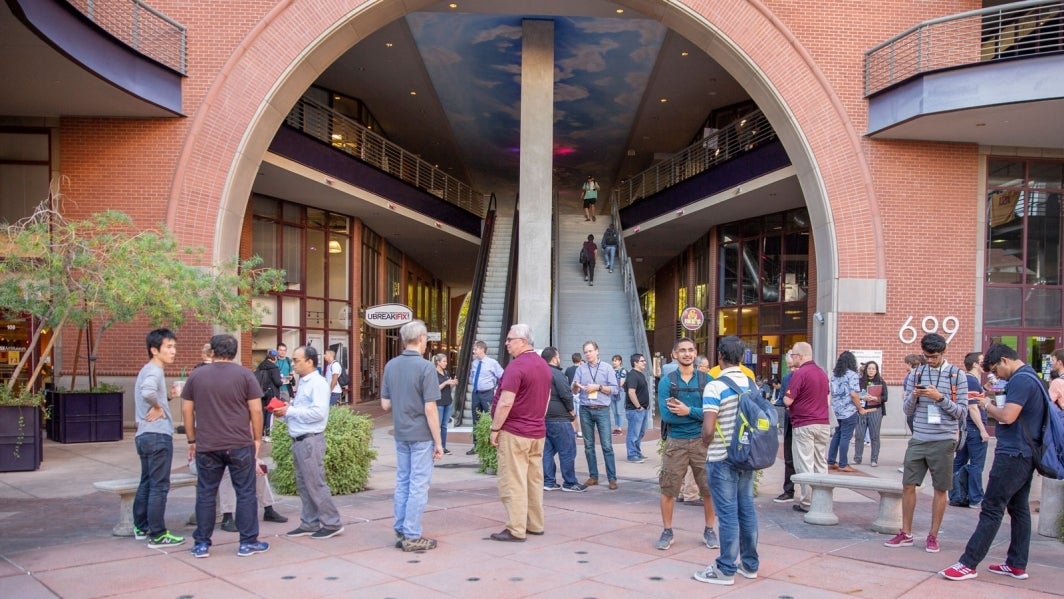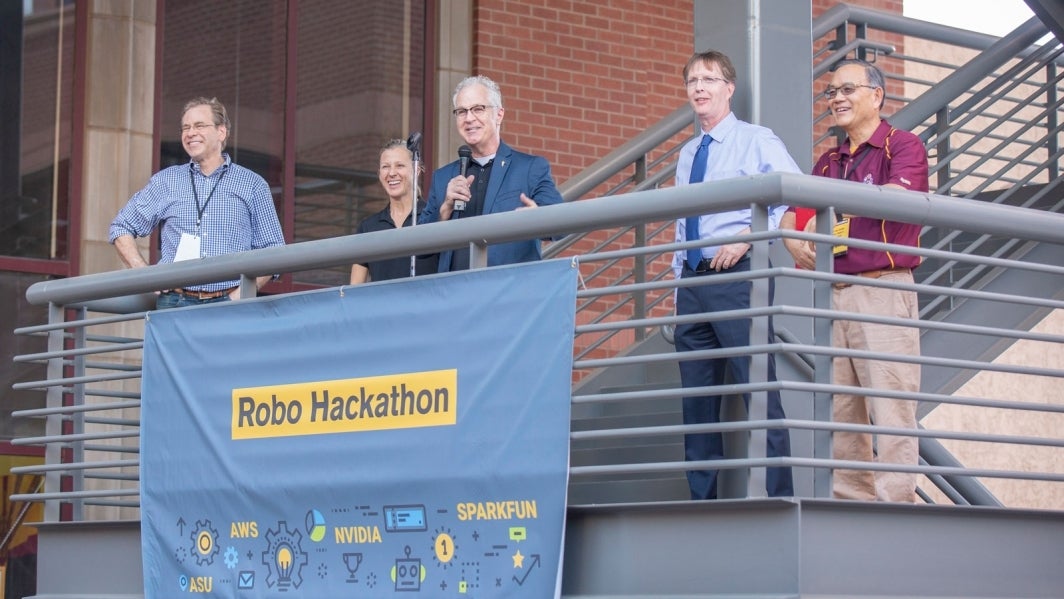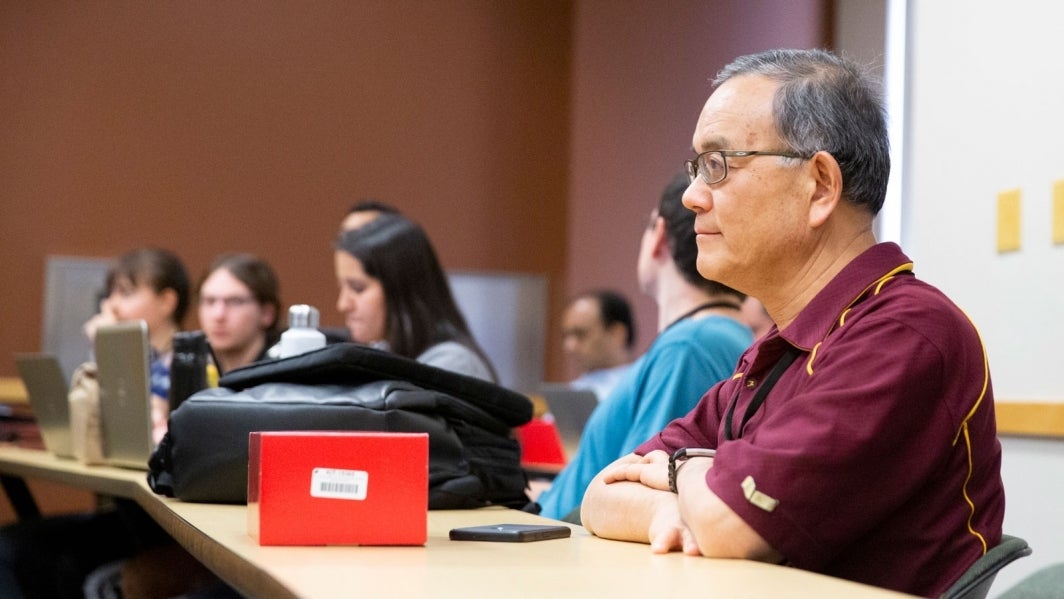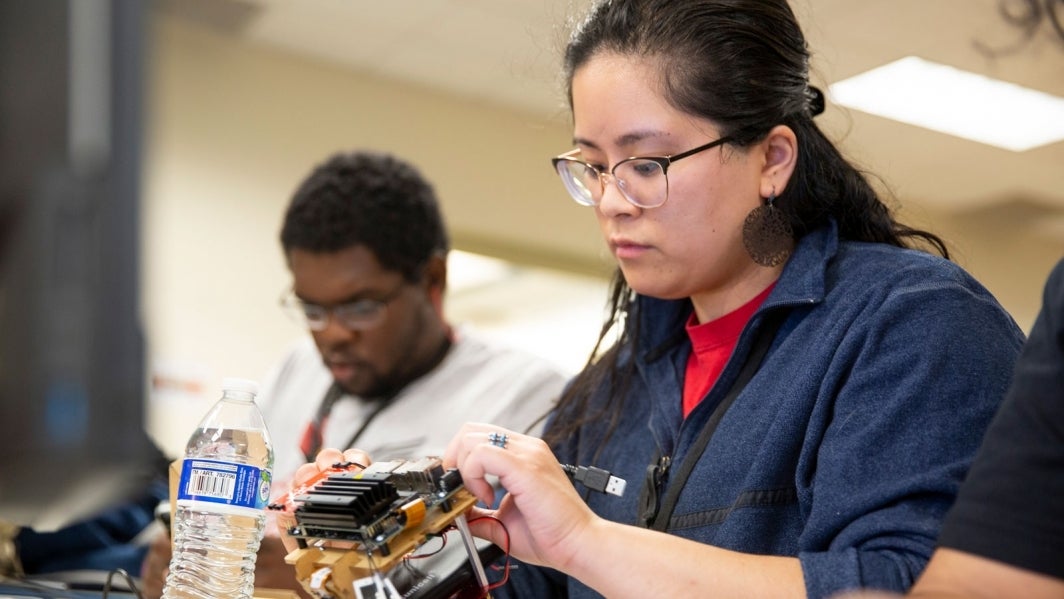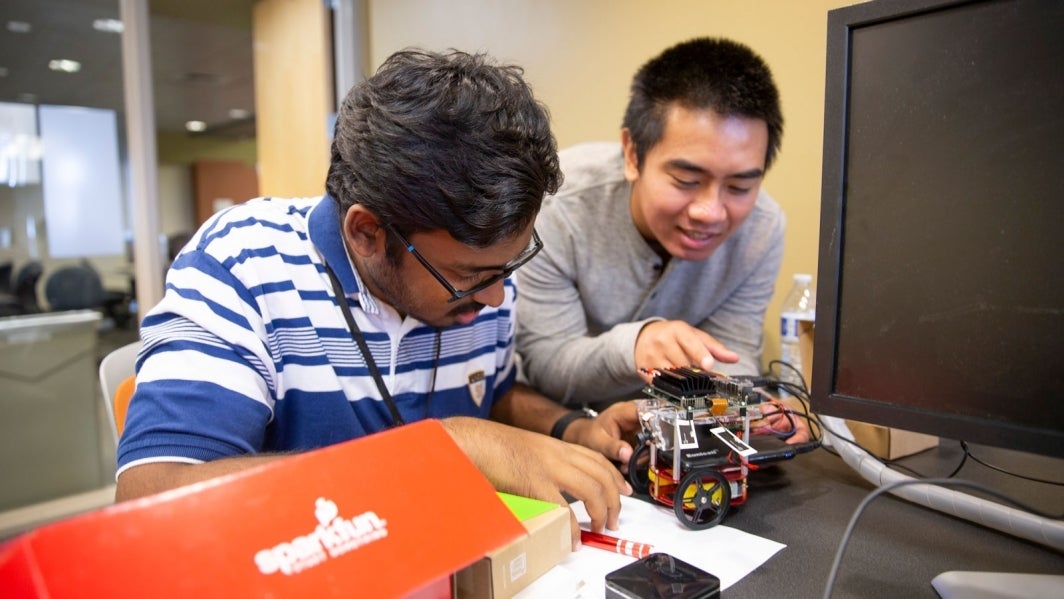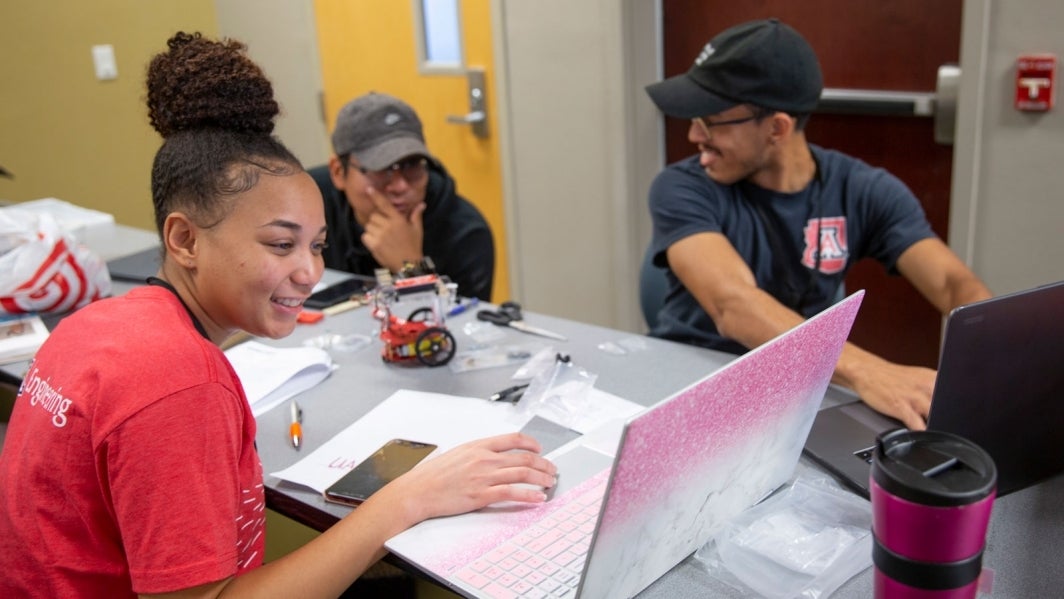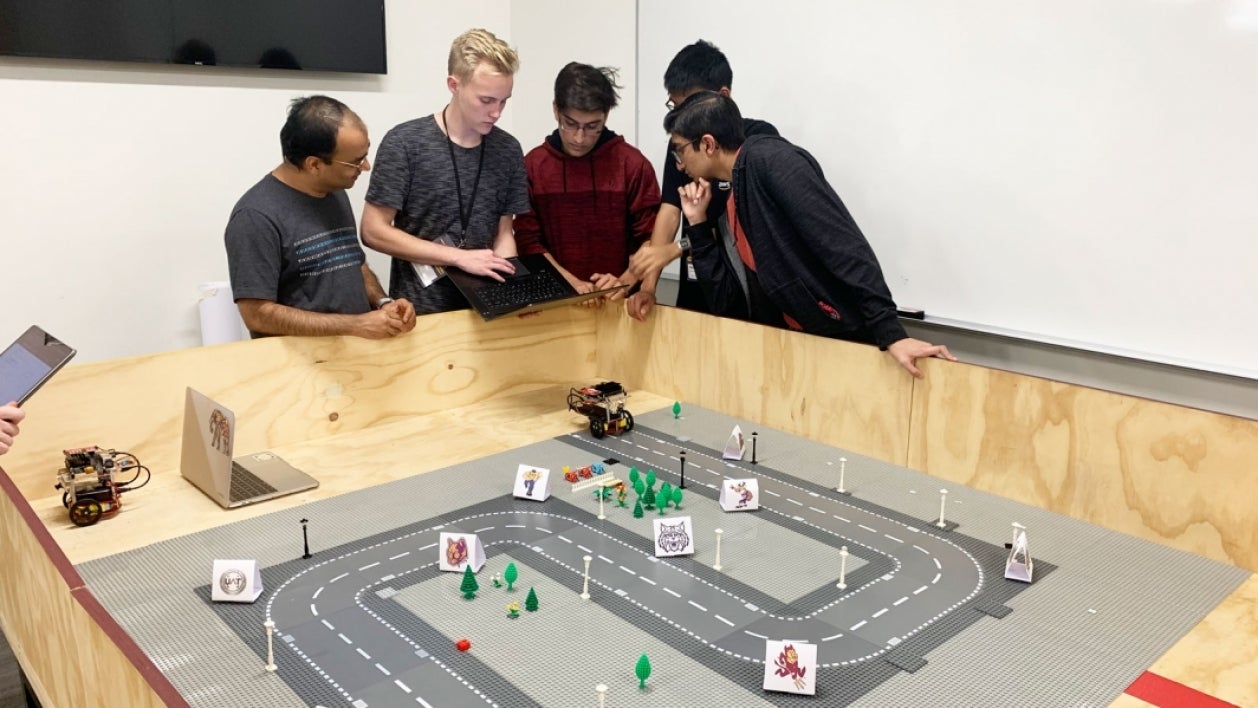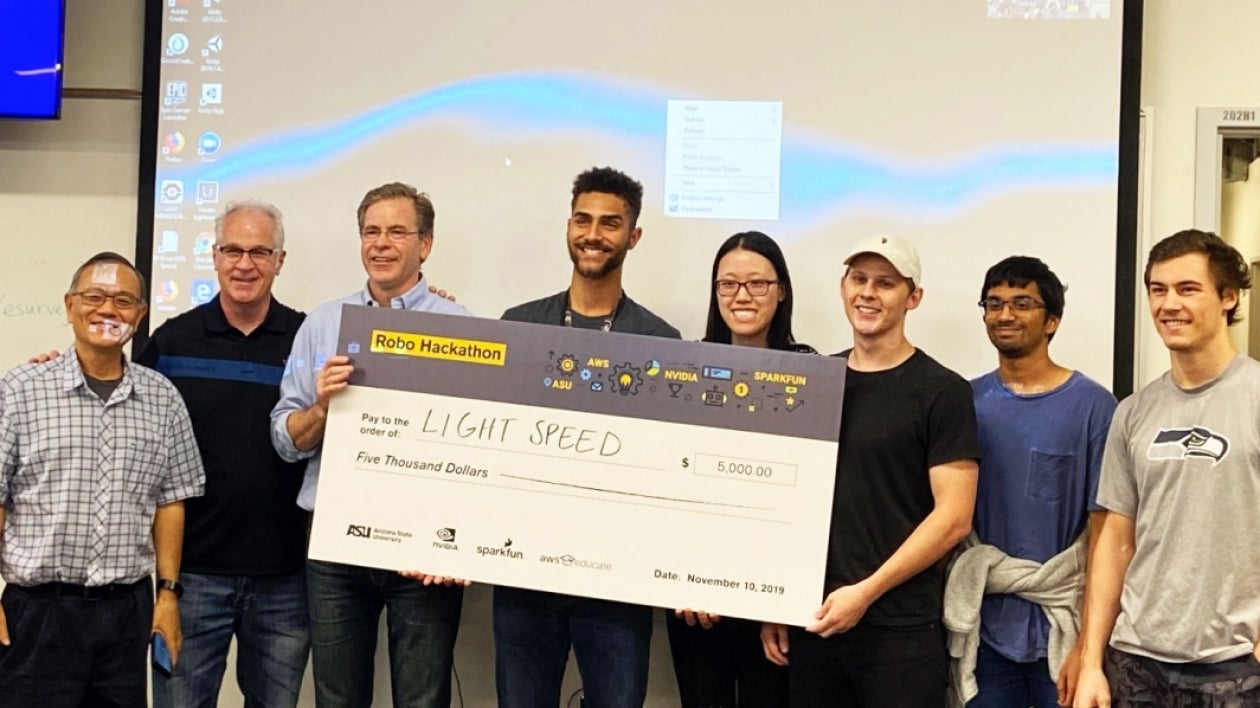Robo Hackathon puts students' technical skills to the test
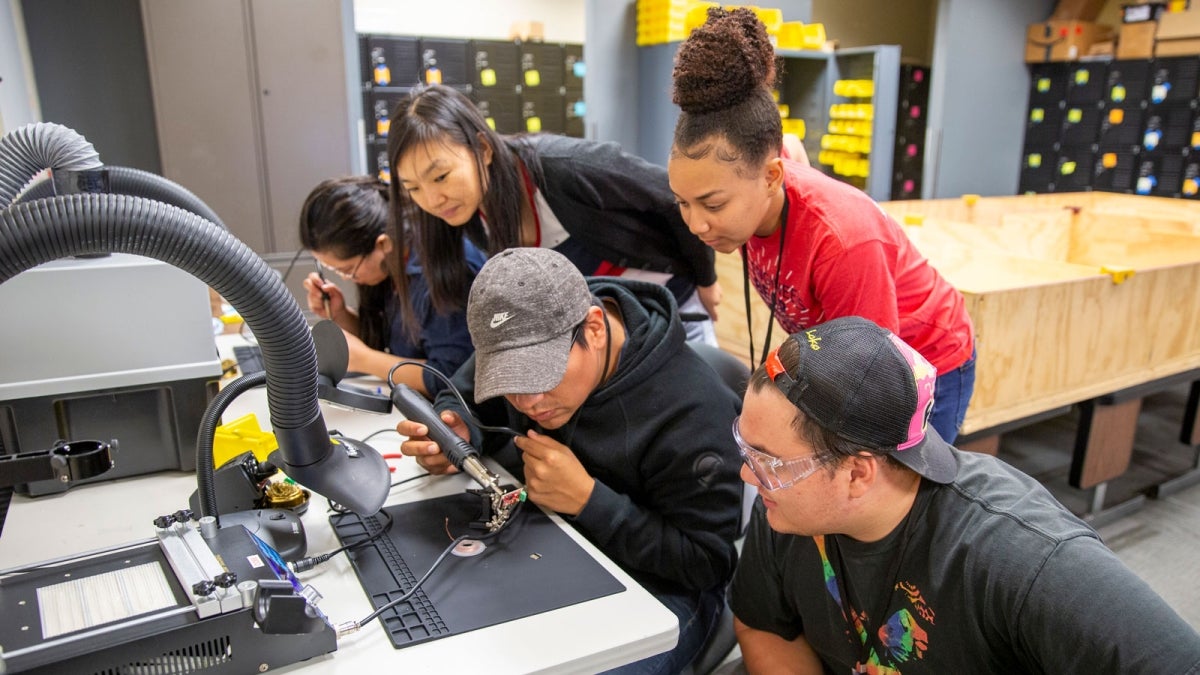
Undergraduate students from all over Arizona applied their skills in robotics, machine learning and artificial intelligence at the first Robo Hackathon hosted by ASU. The Ira A. Fulton Schools of Engineering, ASU University Technology Office and sponsors NVIDIA and Amazon Web Services challenged students to build robots that could recognize their school’s mascot using open-source SparkFun JetBot AI Kits powered by NVIDIA’s Jetson Nano Developer Kit and Amazon Web Services tools such as AWS RoboMaker and SageMaker. Photo by Erika Gronek/ASU
Arizona State University students took on challenges in robotics, machine learning and artificial intelligence alongside their peers from universities and community colleges across the state at the first-ever Robo Hackathon on ASU’s Tempe campus.
Undergraduate students in engineering, computer science and related majors were challenged with developing an autonomous robotic system that could race through a track and recognize their school’s mascot.
Each team, which included three to five undergraduate students and a maximum of one graduate student, included members representing multiple disciplines, just as the field of artificial intelligence requires in industry and research teams. They competed for more than $8,000 in prizes — and bragging rights as the first Robo Hackathon winner.
Robotics, machine learning and artificial intelligence are growing in importance as Arizona’s industry and academic institutions position the region as a smart technology hub. The ASU University Technology Office hosts hackathons each fall and spring to empower students to apply their skills and learn new ones to solve real-world problems. ASU UTO saw a statewide robotics hackathon as a great opportunity.
"The Robo Hackathon — and all ASU hackathons we lead — are a way to actively engage students, our next generation of leaders and changemakers, with opportunities to learn and apply the kinds of skills that are vital for the growth of Arizona and beyond,” said John Rome, deputy chief information officer for ASU UTO and lead organizer of the Robo Hackathon. “The students who participated are truly a snapshot of the future and it gives us great pride and hope. It was an honor to provide them an opportunity to experiment with the latest cloud solutions."
To put on Arizona's first Robo Hackathon, UTO leveraged strategic partnerships with the Ira A. Fulton Schools of Engineering at ASU and the university’s work in the Smart City Cloud Innovation Center, which includes partners such as Amazon Web Services, to organize an event that engages the next generation of changemakers to use their skills to impact Arizona’s technology future.
Sponsors NVIDIA and AWS provided the participants access to some of the latest robotics and AI programming technology. Students used the open-source SparkFun JetBot AI Kit powered by NVIDIA’s Jetson Nano Developer Kit as a launchpad to create their AI projects, paired with AWS tools such as AWS RoboMaker and SageMaker.
Yinong Chen, a principal lecturer of computer science and engineering in the Fulton Schools, helped design the competition missions that helped students progressively increase their robots’ capabilities to become mascot-identifying racing bots. He says this was a great opportunity for students to apply their classroom knowledge.
“The Robo Hackathon helped Arizona students combine the knowledge they learned in university classes with the cutting-edge technologies and platforms provided by AWS, Nvidia and SparkFun, including robotics, internet of things and machine learning skills,” Chen said.
Over three days, the students learned how to use AWS tools, assembled their SparkFun JetBot kits and machine learning concepts to detect and navigate a path and to classify images. Their missions included basic movements, autonomous navigation around obstacles and recognizing mascots. The participating teams were scored on their speed and completion of the missions.
The students also had to think quickly on their feet when an unexpected speed bump caused the image reading capabilities of the camera to not work as planned.
“Finding existing problems in the system is a part of a hackathon event, and the students did it,” Chen said. “The organizers had to slightly modify the missions to get around the problem, which allowed the students to create a new solution based on the new requirements.”
He says he was impressed by the students’ ability to dynamically adjust to the new challenge by utilizing their understanding of fundamental principles of machine learning and their programming skills.
Chen’s favorite mission was a speed race in which students’ robots had to capture and recognize the track images using machine learning.
“The robot must perform all the difficult tasks in racing conditions,” Chen said. “It is very hard to achieve what the students achieved (in the short time frame of) the hackathon.”
Overall, Chen thought it was an excellent event and a valuable experience for all the students involved.
“The event was well organized and students learned a lot from the hackathon, whether or not they won the cash prizes,” he said.
Team Light Speed from ASU took home first place and $5,000, Team Robin Noodles from ASU was awarded second place and $2,500, and Team CATS from the University of Arizona earned third place and $1,000.
UTO will continue to host hackathons at ASU that apply hands-on skills in high demand in the region. With the popularity of the first Robo Hackathon, UTO will likely hold more opportunities to apply robotics, machine learning and artificial intelligence skills in future events.
More Science and technology

Indigenous geneticists build unprecedented research community at ASU
When Krystal Tsosie (Diné) was an undergraduate at Arizona State University, there were no Indigenous faculty she could look to…

Pioneering professor of cultural evolution pens essays for leading academic journals
When Robert Boyd wrote his 1985 book “Culture and the Evolutionary Process,” cultural evolution was not considered a true…

Lucy's lasting legacy: Donald Johanson reflects on the discovery of a lifetime
Fifty years ago, in the dusty hills of Hadar, Ethiopia, a young paleoanthropologist, Donald Johanson, discovered what would…
